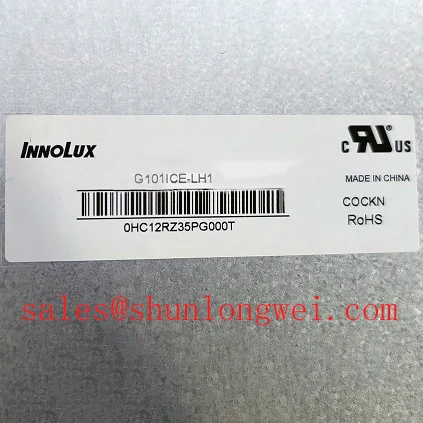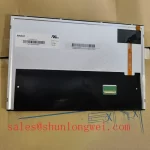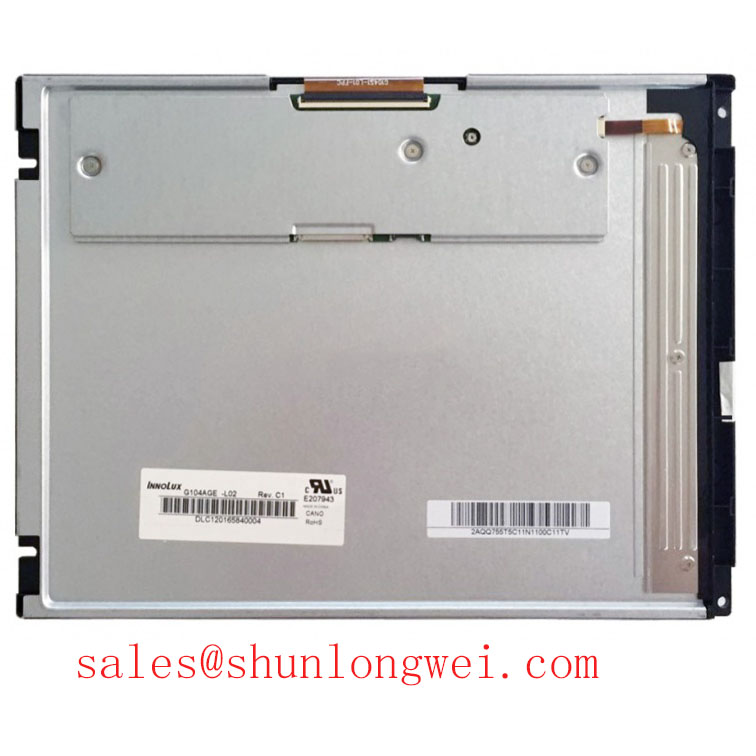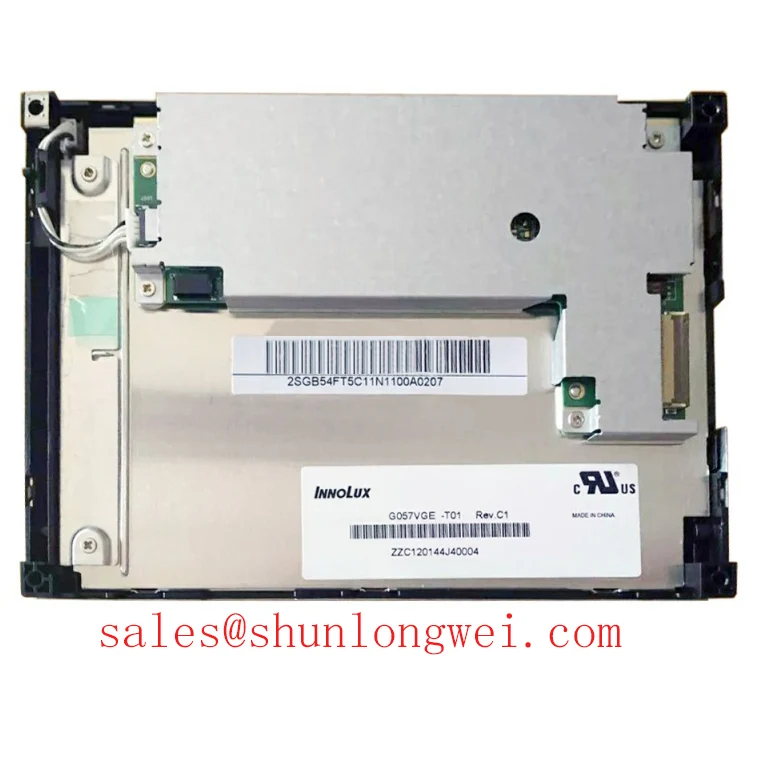Content last revised on November 15, 2025
G101ICE-LH1: 10.1" Industrial LCD for Harsh Environments
Introduction and Key Specifications
The G101ICE-LH1 is an industrial-grade 10.1-inch display engineered for long-term stability in demanding environments, combining high brightness with an exceptionally wide operating temperature range. Delivering superior optical performance through its IPS panel technology, this TFT-LCD module provides a dependable human-machine interface solution for systems where environmental resilience is a primary design criterion. How does it ensure functionality in extreme cold and heat? Its native ability to operate from -30°C to +80°C minimizes the need for auxiliary heating or cooling systems, simplifying thermal design and lowering total cost of ownership.
- Core Specs: 1280x800 Resolution | 1000 cd/m² Brightness | -30°C to +80°C Operating Temp.
- Key Benefits: Superior visibility in high ambient light. Uncompromised performance in extreme temperatures.
Built for the Demands of Modern Industrial Automation
As industrial automation and outdoor systems become more prevalent, the requirement for components that can withstand environmental stressors without performance degradation has intensified. Displays are often the most vulnerable part of a system, susceptible to failure in extreme temperatures or becoming unreadable in bright sunlight. The G101ICE-LH1 directly addresses these industry-wide challenges. Its robust construction is a response to the push for more decentralized and ruggedized equipment in sectors like logistics, agriculture, and public utilities. By providing a reliable visual interface that functions across a vast temperature spectrum, this module supports the development of all-weather control panels and outdoor information kiosks, aligning with the trend of extending advanced digital interfaces beyond climate-controlled environments.
Deployment Scenarios: Where Reliability Meets Visibility
The technical attributes of the G101ICE-LH1 translate into steadfast performance in a variety of specialized deployments. In logistics and cold chain management, it can be integrated into forklift terminals or warehouse control panels that operate in both refrigerated and non-refrigerated zones without issue. For marine and transportation applications, the high brightness and anti-glare surface ensure that critical navigation or system data remains legible on open bridges or in vehicle cabins under direct sun. Furthermore, its resilience makes it a suitable candidate for industrial process control HMIs located near heat-generating machinery or in unheated manufacturing facilities. The consistent off-axis image quality from its IPS (In-Plane Switching) technology ensures that data can be accurately read by multiple operators from various positions.
Data-Informed Selection: G101ICE-LH1 Technical Profile
Evaluating a display module requires a clear-eyed look at the data. To support your design and procurement decisions, the following presents a factual comparison based on key operational parameters. This information is intended to help engineers assess the G101ICE-LH1's fit within their specific application constraints. Different systems have different priorities; for example, a system requiring a slightly different resolution or interface might consider the G101EVN01.0. The focus here remains on providing objective data for your evaluation process.
- Thermal Operating Range: The -30°C to +80°C range of the G101ICE-LH1 is significantly wider than that of many standard commercial displays, which are often limited to 0°C to +50°C. This parameter is critical for devices intended for outdoor or unconditioned indoor use.
- Luminance: At a typical value of 1000 cd/m², this module provides a high level of brightness essential for sunlight readability. This contrasts with typical indoor-rated displays that offer 250-400 cd/m². For a comprehensive overview of this topic, see the definitive engineer's guide to sunlight-readable HMIs.
- Backlight Lifetime: The LED backlight is rated for a typical lifetime of 50,000 hours, a specification that supports long service life expectations in industrial equipment where maintenance access can be costly and infrequent.
Application Versatility in Challenging Operating Conditions
The engineering of the G101ICE-LH1 is focused on delivering visual clarity and functional integrity across a spectrum of difficult settings. Its feature set makes it a strong contender for integration into systems where both operator interaction and environmental exposure are constants.
Key Application Areas
- Outdoor Kiosks and Digital Signage: The combination of high brightness and a wide temperature range ensures continuous operation and readability in changing weather conditions.
- Industrial HMI Panels: Suitable for factories, processing plants, and automation cells where temperature fluctuations and high ambient lighting are common.
- Vehicle and Marine Displays: Provides a rugged and clear display solution for control interfaces in trucks, heavy machinery, and marine vessels. What is the G101ICE-LH1's key environmental advantage? Its wide -30 to +80°C operating temperature range ensures reliable function.
- Portable Test and Measurement Equipment: The robust design and clear visibility support the needs of field technicians who use devices in diverse outdoor and indoor environments.
For outdoor kiosks or unheated vehicle cabins requiring consistent readability, the G101ICE-LH1's 1000-nit brightness and -30°C operational limit offer a decisive advantage.
Core Technical Specifications for System Integration
The following parameters are derived from the official datasheet to aid in system design and integration. For complete details, please refer to the product specification document.
| Display Characteristics | |
|---|---|
| Screen Diagonal | 10.1 inch |
| Resolution | 1280 (RGB) × 800 (WXGA) |
| Panel Technology | a-Si TFT-LCD, IPS Type |
| Luminance | 1000 cd/m² (Typ.) |
| Contrast Ratio | 1000:1 (Typ.) |
| Viewing Angle (L/R/U/D) | 85/85/85/85 degrees (Typ.) |
| Surface Treatment | Anti-Glare |
| Electrical & Interface | |
| Interface | LVDS (1 channel, 8-bit) |
| Power Supply (Logic) | 3.3V (Typ.) |
| Backlight | WLED, 50,000 hours (Typ.) |
| Mechanical & Environmental | |
| Operating Temperature | -30°C ~ +80°C |
| Storage Temperature | -40°C ~ +90°C |
Engineering for Environmental and Mechanical Stability
The design of the G101ICE-LH1 centers on delivering durability. The wide operating temperature is a cornerstone of this design. Think of this temperature range as the operational "road" the display can travel on. For many displays, this road is a short, smooth city street. For the G101ICE-LH1, it's an all-terrain highway that stretches from arctic cold to desert heat, ensuring the device arrives at its destination without failure. This capability is achieved through careful selection of liquid crystal material and electronic components that maintain stable characteristics under thermal stress. The anti-glare surface treatment is not merely a coating; it is a micro-etched surface designed to diffuse incident light, which is crucial for reducing specular reflection and maintaining image clarity for operators who cannot choose their lighting conditions. How does IPS technology benefit this display? It provides consistent 85/85/85/85 degree viewing angles for off-axis clarity.
Technical FAQ for the G101ICE-LH1
1. What is the primary engineering benefit of the -30°C to +80°C operating temperature range?
The main benefit is the simplification of the end-product's thermal management system. It often eliminates the need for dedicated heaters in cold environments or high-flow fans and sometimes even air-conditioning in warmer settings. This reduces system complexity, power consumption, potential points of failure, and overall total cost of ownership.
2. How does the 1000 cd/m² brightness level impact usability in bright conditions?
A brightness of 1000 cd/m² (or nits) ensures the screen's output is powerful enough to compete with high levels of ambient light, including indirect or reflected sunlight. This makes the display content legible, preventing the "washout" effect seen on displays with lower luminance. In conjunction with the anti-glare surface, it provides a highly readable HMI for outdoor and brightly lit industrial applications.
For engineering support or to discuss how the G101ICE-LH1 can be integrated into your specific system architecture, please contact our technical team to request further information or a quotation.










